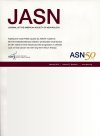Regenerative Role of Lrig1+ Cells in Kidney Repair
Lrig1+ cells exist long term during kidney homeostasis and become activated upon injury, contributing to regeneration.Lrig1+ cells and their progeny emerge during tubulogenesis and contribute to proximal tubule and inner medullary collecting duct development.Lrig1+ cells expand and differentiate into a mature nephron lineage in response to AKI to repair the proximal tubule.
Background
In response to severe kidney injury, the kidney epithelium displays remarkable regenerative capabilities driven by adaptable resident epithelial cells. To date, it has been widely considered that the adult kidney lacks multipotent stem cells; thus, the cellular lineages responsible for repairing proximal tubule damage are incompletely understood. Leucine-rich repeats and immunoglobulin-like domain protein 1–expressing cells (Lrig1+ cells) have been identified as a long-lived cell in various tissues that can induce epithelial tissue repair. Therefore, we hypothesized that Lrig1+ cells participate in kidney development and tissue regeneration.
Methods
We investigated the role of Lrig1+ cells in kidney injury using mouse models. The localization of Lrig1+ cells in the kidney was examined throughout mouse development. The function of Lrig1+ progeny cells in AKI repair was examined in vivo using a tamoxifen-inducible Lrig1-specific Cre recombinase-based lineage tracing in three different kidney injury mouse models. In addition, we conducted single-cell RNA sequencing to characterize the transcriptional signature of Lrig1+ cells and trace their progeny.
Results
Lrig1+ cells were present during kidney development and contributed to formation of the proximal tubule and collecting duct structures in mature mouse kidneys. In three-dimensional culture, single Lrig1+ cells demonstrated long-lasting propagation and differentiated into the proximal tubule and collecting duct lineages. These Lrig1+ proximal tubule cells highly expressed progenitor-like and quiescence-related genes, giving rise to a novel cluster of cells with regenerative potential in adult kidneys. Moreover, these long-lived Lrig1+ cells expanded and repaired damaged proximal tubule in response to three types of AKIs in mice.
Conclusions
These findings highlight the critical role of Lrig1+ cells in kidney regeneration.




